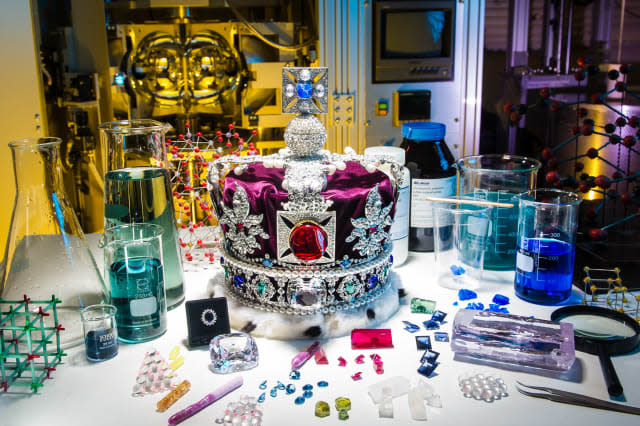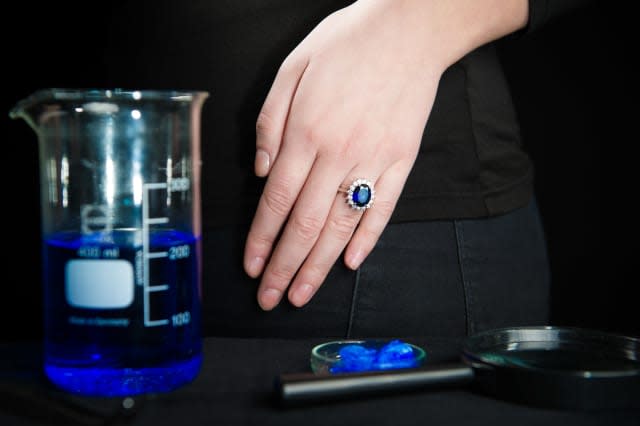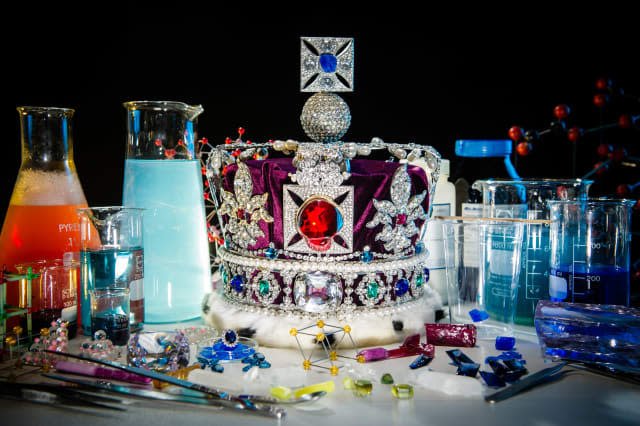Scientists grow replica of crown jewels

Scientists have got their hands on part of the Crown Jewels, by making their own.
Leading physicists have grown a replica of the Imperial State Crown, a key element of the world famous jewels held in the Tower of London.
They have also managed to reproduce the Duchess of Cambridge's engagement ring.

Scientists, working with the Big Bang UK Young Scientists & Engineers Fair, which takes place next month, grew their own jewels from ingredients included in common household items such as drain unblocker, sandpaper and antiseptic cream.
The experiment, created to inspire the next generation of scientists and engineers, took eight months and marks the Queen becoming the longest reigning monarch later this year.
The project saw scientists grow exact replicas of some of the most famous jewels in the world.
The "crowning glory" of the Imperial State Crown, the St Edward's Sapphire, was made from a common cleaning powder mixed with boiling water to create a copper sulphate crystal.

The experiment, which children can try themselves in the classroom, shows the science behind acid-base reactions which form the basis of nearly all biological processes in living things.
The Big Bang Fair's jewels also contain thousands of laboratory-grown crystals, which are almost impossible to tell apart from the real thing with the naked eye.
Synthetic gems have many important uses in everyday life such as in lasers, smartphone screens, and watch faces - boasting hardiness close to that of natural diamonds.
By exposing basic chemicals to extremely high temperatures, scientists were able to create synthetic spinel, corundum and cubic zirconia crystals to mimic priceless gems including the Black Prince Ruby, Stuart Sapphire, and the Cullinan II, the fourth largest polished diamond in the world.
Once grown, the crystals were cut to the exact specifications of the royal treasures before being carefully set into their casings by jewellers.

Paul Jackson, chief executive of Engineering UK, which puts on the fair, said: "By taking a simple classroom experiment as inspiration, we worked with scientists to create this unique crown, with the aim of showing young people just how fun and fascinating science, technology, engineering and maths can be.
"Every year thousands of pupils and teachers attend the Big Bang Fair, which exists to inspire young people to become the next generation of scientists and engineers - rewarding careers for those young people and essential to the health of the UK economy."
Prabhakaran Dharmalingam, head of the crystal growth unit at Oxford University, said: "It's been great to have been given the chance to get involved with the Big Bang Fair.
"Crystals are amazing - not only are they incredibly beautiful to look at, but they are also very useful. A lot of important discoveries, many that went on to win Nobel prizes, were only possible because of crystals.
"I hope that this project will help get young people excited about science and inspired to take that excitement further with their studies and into their careers."

The jewels will be on display at the fair at the NEC on Birmingham from March 11 to 14. To register and for more information visit www.thebigbangfair.co.uk.
For a step-by-step guide to creating your own crystals at home or in the classroom, visit: www.thebigbangfair.co.uk/growthecrownjewels
Read more on AOL Money
Queen's official gift list revealed
€1 million reward offered in Cannes jewel heist




